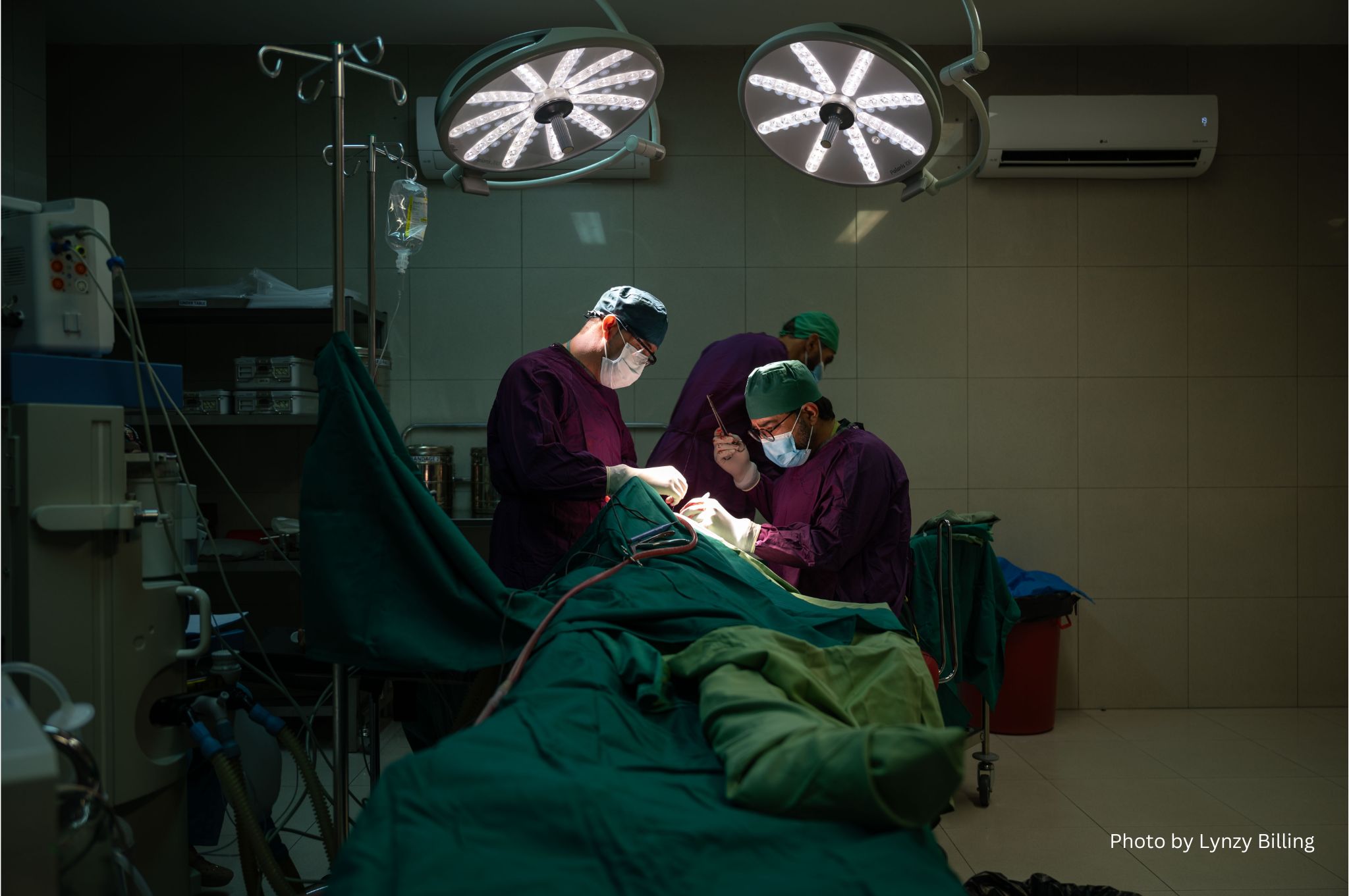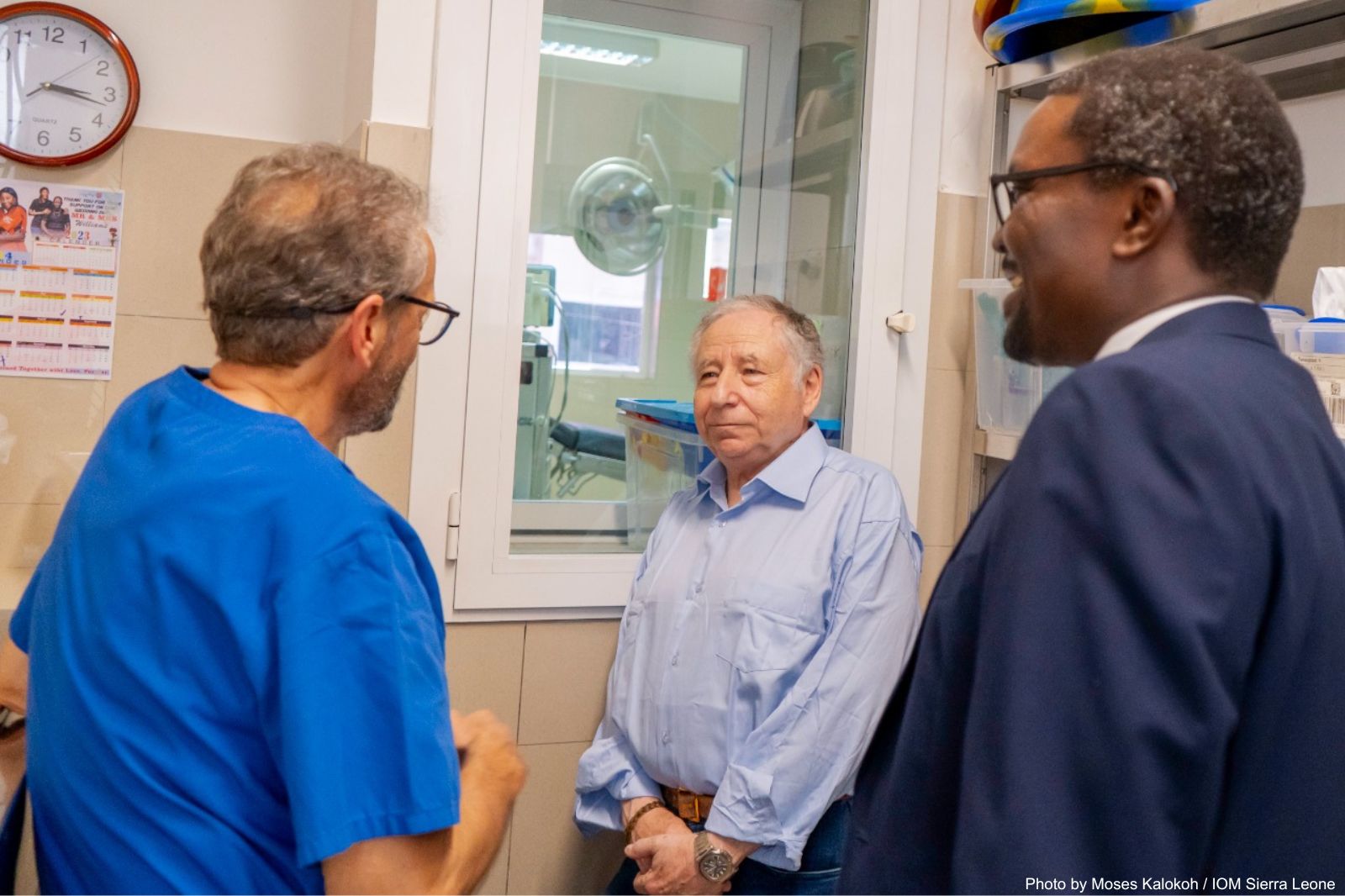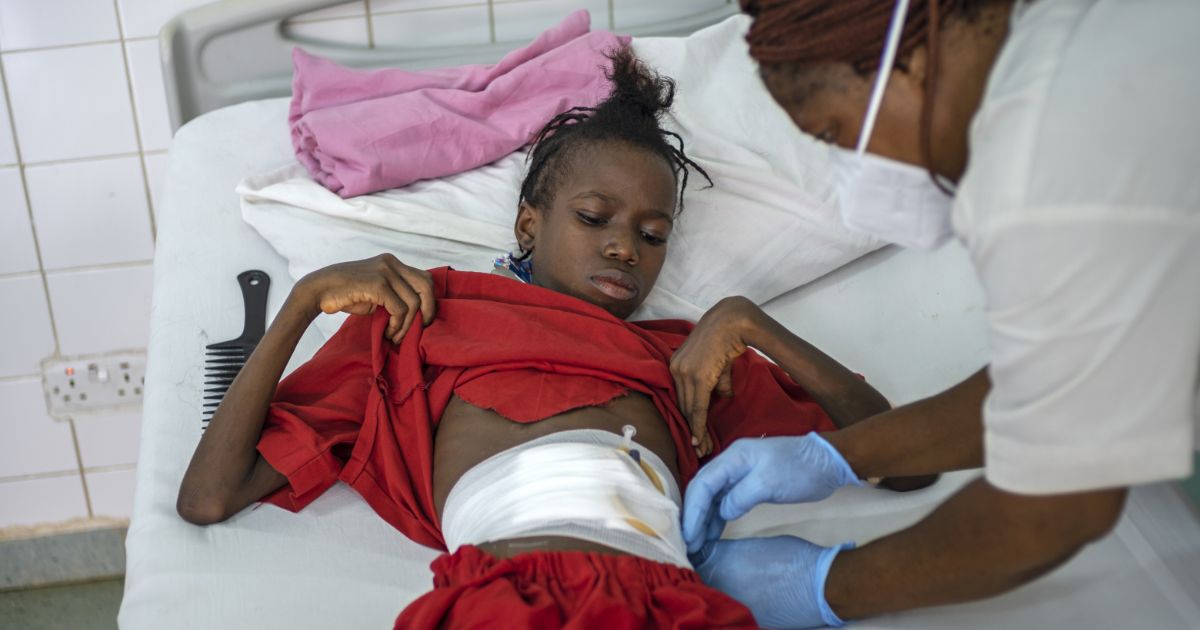
Sierra Leone: Swallowing Lye Is Still One Of The Main Causes Of Admission Of Child Patients At Our Surgical Centre In Goderich.
In 2004, a project to encourage sustainable production of homemade soap began in Sierra Leone. In spite of its good intentions, it failed to take into account local realities, and became a silent peril for many children in the country.
Lye, the raw material used to make soap in homes, is a chemical compound which can be mistaken for sugar or salt when in its solid form, and for water when in its liquid form. To ease its transformation into soap, it is left for hours in open bottles, often within the reach of children.
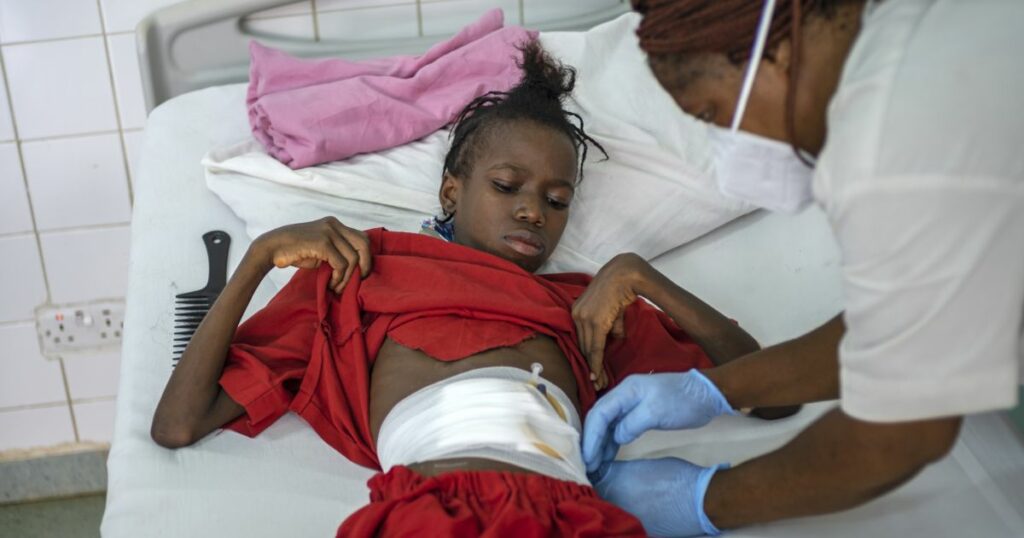
11-year-old Fatu became malnourished after swallowing lye. At EMERGENCY’s Surgical Centre in Goderich, her oesophagus was dilated and she underwent a gastrostomy.
Swallowing of lye is still one of the main causes of admission of child patients at our Surgical Centre in Goderich. These accidents result in serious burns to the oesophagus, requiring several stages of treatment, surgery and a long recovery period in the hospital.
It is not easy for parents to keep lye out of reach of children who are darting about from house to house. They have been making soap for 18 years here in Sierra Leone, and the industry has claimed hundreds of victims every year. In 2021 alone, our hospital admitted more than 140 new patients, just under 80% of whom were under five years old.
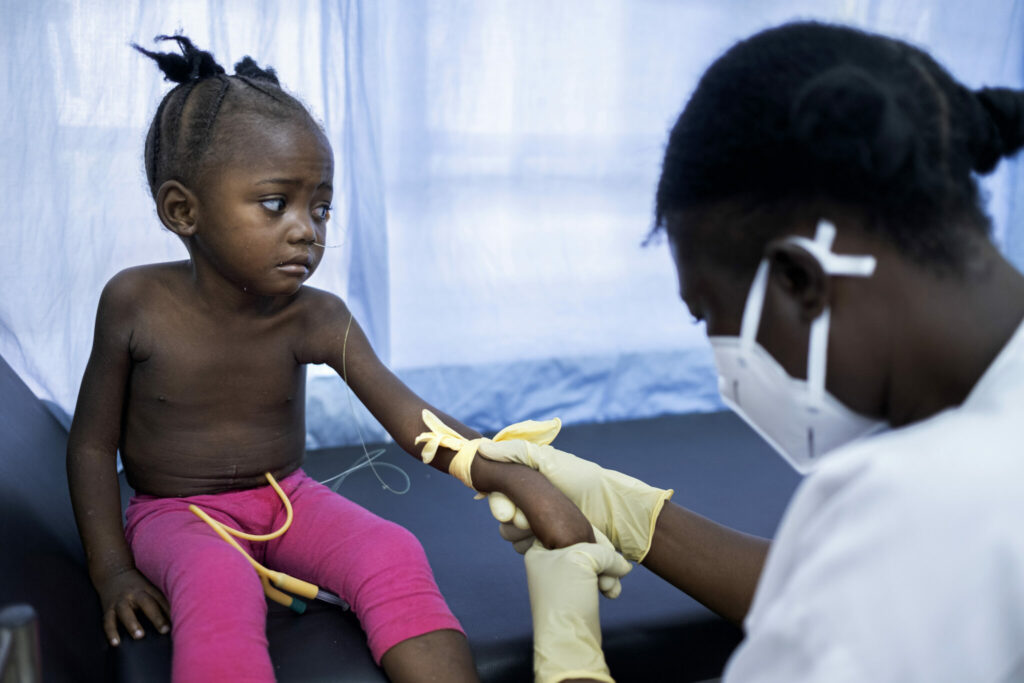
One year before this photograph was taken, Medisha Macavoray accidentally drank lye at her neighbours’ house.
EMERGENCY’s Lye Programme – treating burns to the oesophagus
Swallowing lye “is a serious and massive problem,” says Kamanda, a health promoter at our hospital, “but bringing it to public attention in Sierra Leone is a struggle. We are addressing this ignorance of the problem by telling the victims’ stories of suffering and by working on prevention, but this alone isn’t enough.”
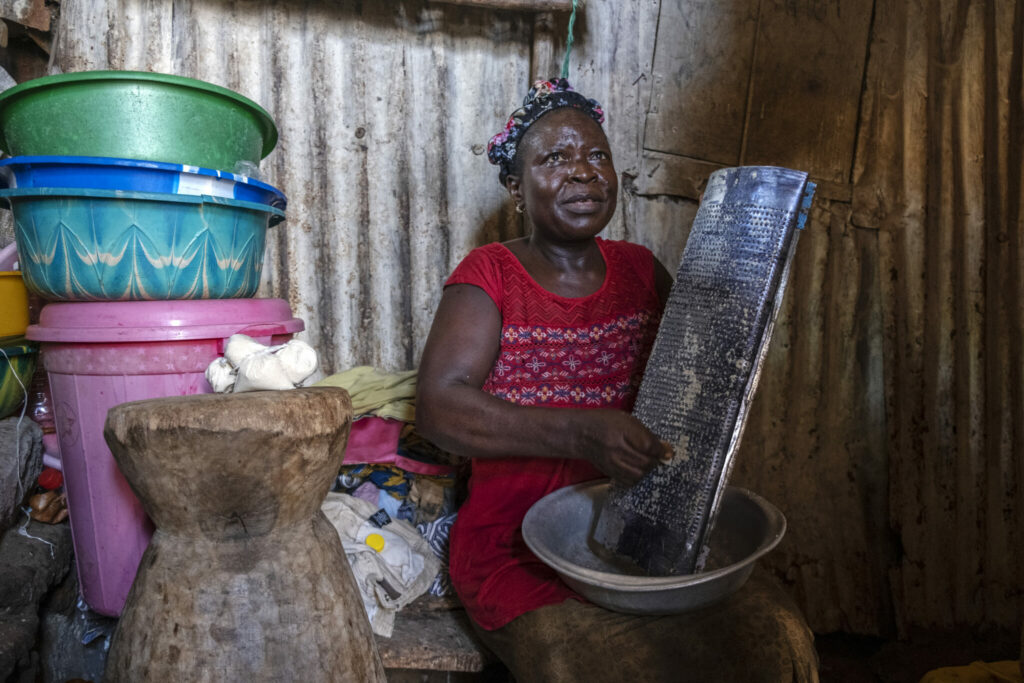
A woman manufactures soap from lye in a shantytown in Sierra Leone.
The Lye Programme now under way at our centre has the twofold aim of treating the chemical’s victims and raising public awareness of the problem. EMERGENCY’s hospital is the only facility in the entire country equipped to dilate patients’ oesophagi, which is essential if these children are to go on eating – or indeed to begin eating again, in the more serious cases.
Maryrose, head of the Lye Programme, explains: “We’re running prevention campaigns. We teach people about the risks of manufacturing soap at home and tell them about our work, so families know where to turn should this disaster happen to them. When it does happen, there’s no time to lose, and yet children are sometimes brought to us months after their accident, malnourished and on the brink of dying.”
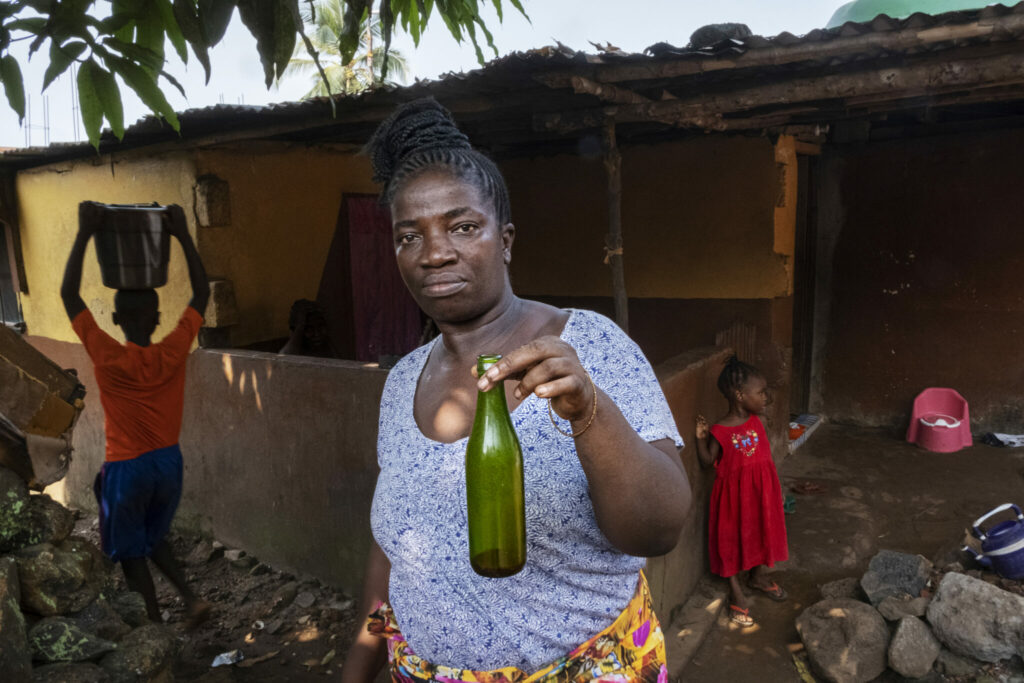
A lady with the bottle she uses to store lye when making soap.
How oesophagus dilation works

Anaesthetist Momcilo and nurses Sia and Hannah in the operating theatre. 11-year-old Fatu has swallowed lye.
It often takes between three and six dilations of the oesophagus to treat lye burns – one every six to 15 days. The second step is monthly check-ups, to assess whether the results of the first are lasting. The success of the treatment is decided by the patient’s response to a diet of baby food and other soft meals.
Some children will not accept this diet, so recourse has to be made to a surgical procedure known as a gastrostomy. Openings are made in the patient’s chest and stomach and a tube passed through these to provide artificial nourishment. EMERGENCY gives families meals that go down easily and teaches them how to make and feed them to their children so as to prevent further complications.

Seven-year-old Salliu Jalloh
Gastrostomy is not always the definitive solution. If the child responds well to the treatment, a series of oesophagus dilations can also be carried out. Gastrostomy can be stopped once the patient has shown they can handle an ordinary diet for a whole year; once that happens, the treatment is considered a success.
The activities at the Surgical Centre in Goderich are funded by the Italian Agency for Development Cooperation


